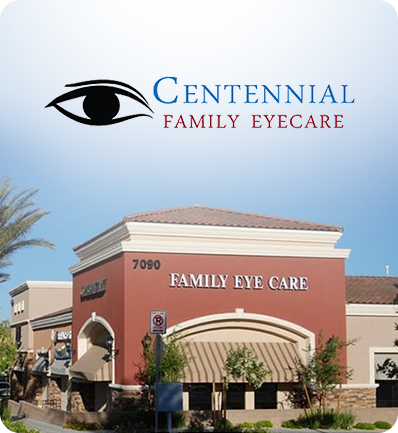
When was the last time you visited your eye doctor? Many people mistakenly believe that they only need to visit their eye doctor if they start to experience problems with their eyes or vision – for example, if they start to notice that objects appear blurred, or they have episodes of eye pain. However, visiting your eye doctor regularly is an essential part of your preventative care.
What this means is that going to see your eye doctor at Centennial Family Eyecare regularly, even if you don’t feel as though your vision has changed or you aren’t experiencing any problems, could help to preserve your eye health and eyesight.
Eye doctors recommend that everyone visits their eye doctor for a comprehensive eye exam at least once every 2 years. This frequency reduces if you already wear prescription eyewear (glasses or contact lenses), if you use a computer/digital device frequently, or if you have been diagnosed with a progressive eye condition, such as glaucoma or macular degeneration.
Why are regular professional eye exams important?
We understand that it can be hard to fit appointments into a busy schedule, and they may not seem to be a priority if you aren’t suffering in some way. Nevertheless, without regular professional eye exams, any eye conditions that you may develop could become advanced. Since many eye diseases can have serious or permanent consequences on our vision, this is something that needs to be avoided.
What conditions can be detected at regular eye exams?
Contrary to what many people believe, eye exams aren’t only used to tell how you can see – although checking for a refractive eye error like myopia (nearsightedness), hyperopia (farsightedness), presbyopia, and astigmatism does form an integral part of your appointment.
In addition to this, various tests will be performed to check for signs of any of the following common eye conditions:
Cataracts. Cataracts are characterized by changes in the natural lens of the eye that cause the proteins found in it to clump together, creating opaque patches in your field of vision. Cataracts can occur in one eye or both and will get progressively larger until they are treated. This involves removing the lens of the eye and replacing it with an artificial alternative.
Macular degeneration. Also known as age-related macular degeneration or AMD, this is a leading cause of blindness and there is currently no cure. It occurs when cells in the macula start to deteriorate and aren’t regenerated, affecting our ability to see fine details, color, and more. There’s no cure, but there are things you can do to slow your vision loss.
Glaucoma. Caused by elevated pressure in the eyes placing pressure onto the optic nerve and damaging it, glaucoma can lead to permanent vision loss if it isn’t detected and treated quickly.
Diabetic retinopathy. If you have been diagnosed with diabetes or pre-diabetes, you’ll need diabetic eye screening regularly to make sure that you aren’t suffering from this common complication.
If you would like to find out more about the importance of regular professional eye exams or to schedule an appointment, please contact our team today at Centennial Family Eyecare at our offices in Henderson, N. Durango, or Skye Canyon, Las Vegas, Nevada. You can call 702-299-6200, 702-941-7800, or 702-803-2020 today.





